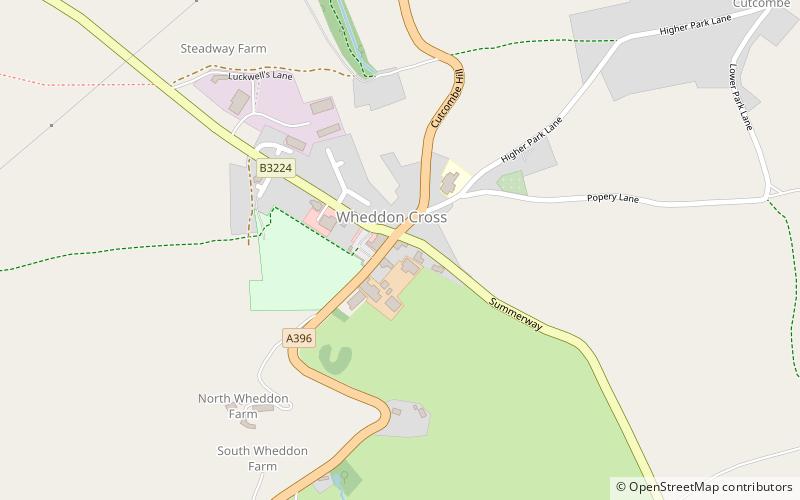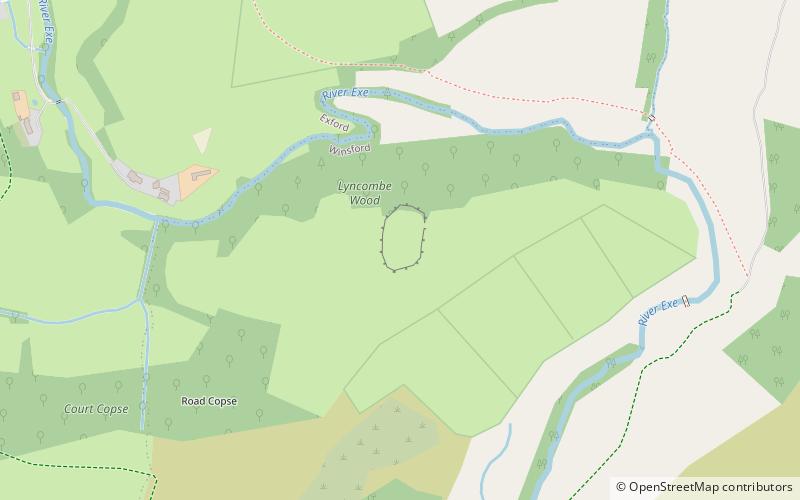Church of St Petrock, Exmoor National Park
#37 among attractions in Exmoor National Park


Facts and practical information
The Church of St Petrock in Timberscombe, Somerset, England has a 15th-century tower, the rest of the building dating from 1708. It has been designated by English Heritage as a Grade I listed building. ()
Exmoor National Park United Kingdom
Church of St Petrock – popular in the area (distance from the attraction)
Nearby attractions include: Coleridge Way, Dunkery Hill, Stoke Pero Church, Kildare Lodge.
 Hiking, Hiking trail
Hiking, Hiking trailColeridge Way, Porlock
132 min walk • The Coleridge Way is a 51-mile footpath in Somerset and Devon, England. It was opened in April 2005, and the route links several sites associated with the poet Samuel Taylor Coleridge starting from Coleridge Cottage at Nether Stowey.
 Archaeological site
Archaeological siteDunkery Hill, Porlock
69 min walk • Dunkery Beacon at the summit of Dunkery Hill is the highest point on Exmoor and in Somerset, England. It is also the highest point in southern England outside of Dartmoor.
 Church
ChurchStoke Pero Church, Exmoor National Park
105 min walk • Stoke Pero Church in Stoke Pero, Somerset, England was built in the 13th century. It is a Grade II* listed building. Standing 1013 feet above sea level, it is the highest church on Exmoor.
 Nightlife
NightlifeKildare Lodge, Minehead
132 min walk • The Kildare Lodge Inn in Minehead, Somerset, England, was built in 1905/6, and is located at 18 Townsend Road, to the south east of the town centre of the seaside resort of Minehead. Originally built as a house, incorporating a doctor's surgery, coach house and stables; it is now used as a pub.
 Nature, Natural attraction, Hill
Nature, Natural attraction, HillBrendon Hills, Exmoor National Park
49 min walk • The Brendon Hills are a range of hills in west Somerset, England. The hills merge level into the eastern side of Exmoor and are included within the Exmoor National Park.
 Memorial
MemorialCaratacus Stone, Exmoor National Park
100 min walk • The Caratacus Stone, sometimes known as the Caractacus Stone, is an inscribed stone on Exmoor in Somerset, England. It is thought to date from the 6th century, and it has been a scheduled monument since 1925.
 Forts and castles
Forts and castlesRoad Castle, Exmoor National Park
99 min walk • Road Castle is an Iron Age bank and ditch in the West Somerset district of Somerset, England. The hill fort is situated approximately 2 miles west from the village of Winsford.
 Church
ChurchChurch of St Mary Magdelene, Exmoor National Park
106 min walk • The Anglican Church of St Mary Magdelene in Exford, Somerset, England was built in the 15th century. It is a Grade II* listed building.
 Forts and castles
Forts and castlesSweetworthy, Exmoor National Park
82 min walk • Sweetworthy is the site of two Iron Age hill forts or enclosures at Luccombe, 4 kilometres south of Porlock, Somerset, England. They are on the north-facing slope of Dunkery Hill. One has a single rampart and external ditch, enclosing 0.25 hectares. The rampart is still visible and the ditch on the east side is used as a trackway.
 Church
ChurchSt Peter's Church, Exmoor National Park
81 min walk • The Anglican St Peter's Church at Exton within the English county of Somerset has a 13th-century tower and 15th century aisle. It is a Grade II* listed building. Some of the original Norman stonework can still be identified in the nave.
 Forts and castles
Forts and castlesBlack Ball Camp, Dunster
114 min walk • Black Ball Camp is an Iron Age hill fort South West of Dunster, Somerset, England on the northern summit of Gallox Hill. It is a Scheduled Ancient Monument. It is also known as British Camp and is possibly associated with Bat's Castle. It has a 3 metres high rampart and a 2 metres deep ditch.
